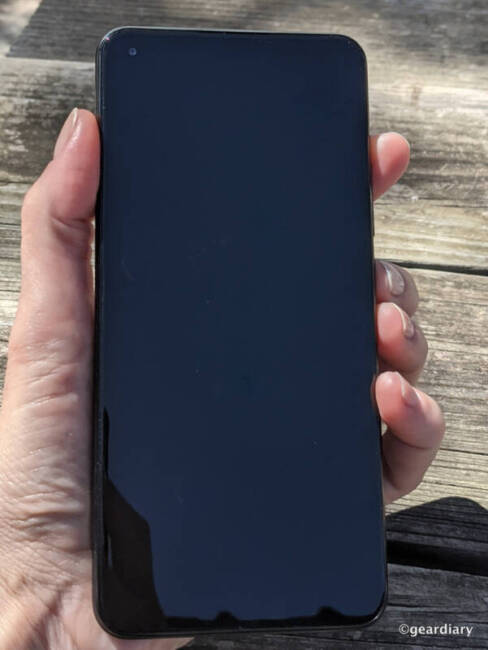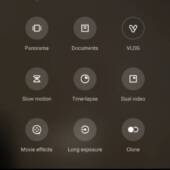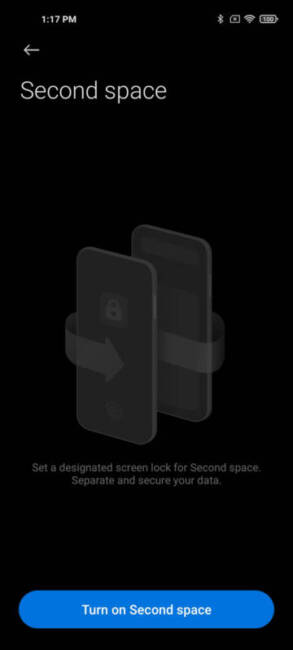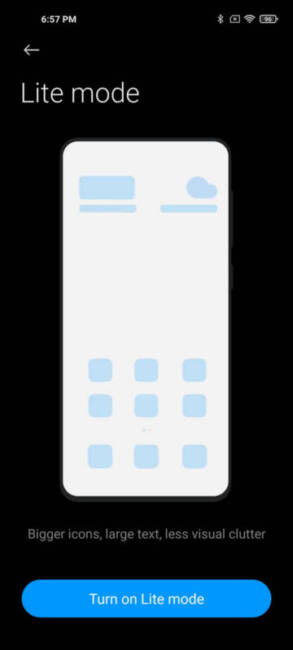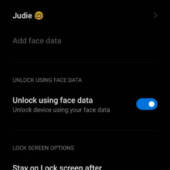The Lowdown
If you are looking for a smartphone that can take great photos, has a large, high-resolution display with a fast screen refresh rate, has decent battery life, and doesn’t get bogged down with normal use—and you don’t want to pay a premium for it—the Xiaomi Mi 11 4G is a compelling choice.
Overall
Pros
- The fingerprint reader built into the power button is very accurate
- The facial recognition works well
- The design is thin and light
- 90Hz screen refresh rate on a bright display
- The camera does a good job and has plenty of features
- It has a dual SIM tray, and it accepts a microSD memory card
- The phone feels and performs like it should cost a lot more than around $300!
Cons
- The Boba Black back is a fingerprint magnet
- No IP dust- or water-resistance rating
It’s easy to get enamored by all of the flagship phones being released by phone makers, but what if you don’t necessarily need (or want) something with 5G, the fastest processor, or a $1000 price tag but still want a great camera? You have options, and one of them is the Xiaomi Mi 11 Lite 4G. This phone packs many features in its thin and light body, and it sells for around $300 — not that you’d ever be able to tell, just looking at it.
Not yet familiar with Xiaomi? That’s okay; we can discover this brand together. If you live outside of the United States, you are likely very familiar with Xiaomi or their Mi, POCO, and Redmi smartphone lines. But maybe, like me, you are new to the brand.
Xiaomi is a relatively new Chinese phone manufacturer; they’ve only been in business for 10 years. Xiaomi isn’t pronounced show-me like I found myself saying it at first — I mean, at least I knew that the “X” in Chinese was a “shh” sound, but I got the rest wrong!
Xiaomi is pronounced SHowww-me (like the way you’d say the beginning of the word “shower” in English), as I learned in this funny yet informative video …
Okay, so now, as you read my review, you will hear the word Xiaomi correctly in your mind; and you’ll also know that Xiaomi means “little rice,” which is kind of cute. Moving right along!
It took a few years for Xiaomi to start selling its phones outside of China, but it is now ranked as one of the top five smartphone companies globally, at number four. So if you haven’t yet tried a Xiaomi phone, it’s understandable! But it’s also time for the brand to be on your radar as I suspect they’ll become more known in the US soon, and what better way to start than with their Xiaomi Mi 11 4G? This phone comes with surprisingly decent tech, especially considering it’s relatively affordable.
The Xiaomi Mi 11 Lite 4G has a 6.55″ AMOLED Dot (2400 x 1080 FHD+) Gorilla Glass 5 display with a 90Hz refresh rate, but you can lower it to 60Hz if you’d prefer to get better battery life. There are three different memory configurations available; you can get it with 6GB (LPDDR4X) RAM and 64GB storage, 6GB (LPDDR4X) RAM with 128GB storage, or the 8GB RAM with 128GB user memory I was sent. The Mi 11 Lite 4G has a 4,250Mah battery with 33W fast charging (but no wireless charging), and it has a mid-tier Qualcomm Snapdragon 732G processor.
Included in the box are the phone, a clear PU case, a SIM tool, a screen protector, a USB Type-C to 3.5mm headphone adapter, a USB Type-A to USB Type-C charging cable, an EU 33W wall charger, and a warranty card.
Xiaomi Mi 11 Lite 4G Hardware
The Xiaomi Mi 11 Lite 4G measures 6.3″ long by 3″ wide by 0.3″ thick, and it weighs 5.4 ounces — which is the same weight as the diminutive Google Pixel 4a. The Mi 11 Lite’s 6.55″ Gorilla Glass 5 display is flat, which I like very much. There is a 16-megapixel punch-hole front-facing camera in the upper left of the display, and there is a very slim 0.75″ ear speaker at the top center.
The corners of the phone are rounded, and the sides are quite straight; it’s a little wide for easy gripping if you have smaller hands, and the glass back is very slick. The display juts up above the phone’s frame by a millimeter or so, and its edges are slightly beveled toward the display’s flat top. You’ll notice what I mean in the photos that show the side views.
While the Mi 11 Lite 4G feels quite slim and light for its size, it is still quite solid. I’m going to give kudos to Xioami for this phone’s build quality because it survived an unfortunate accident this weekend.
I somehow managed to swipe it off my desk when I was trying to swat a fly. I missed the fly, and the smartphone went flying across my office’s hardwood floor, ending up against the wall. It took me half a second to realize it wasn’t in its case — eek! Expecting the worst, I tentatively picked it up, but I was surprised to see that I couldn’t find a single scratch or crack on it anywhere! Such a relief.
You can get this phone in Peach Pink, Bubblegum Blue, or the Boba Black that I received. Keep in mind that there is no IP rating listed, so you won’t want to bring it into the tub or pool with you.
The bezels around the display are slim, and the display is bright and easy to read at 500nits for normal use and up to 800nits in the highest brightness.
On the top, there is a microphone and … and is that an IR blaster? Why, yes, it is. Why would you want an infrared blaster on your smartphone? Well, because then you can use a compatible IR app to turn your phone into a universal remote.
The Xiaomi Mi 11 Lite comes with a built-in app called Mi Remote, but you can also download one of the many other IR apps from Google Play if you already have a favorite.
On the right side, there is a power button (with a built-in fingerprint reader) and a volume rocker.
On the bottom, there is a SIM tray that can either hold two SIM cards or a SIM card and a microSD memory card. This is a welcome feature because far too many US phone makers no longer include memory card capabilities, and I can’t help but resent that lack of functionality. Next, there’s a microphone, a USB Type-C port, and a speaker.
The rear camera array holds three lenses, including the 64-megapixel main camera that has a 1/1.97” sensor size with f/1.79 aperture and contrast autofocus, the 8-megapixel ultra-wide-angle camera that has a 1/4” sensor with f/2.2 aperture and contrast autofocus, and a 5-megapixel telemacro camera (works from 3-7 cm) with f/2.4 aperture and contrast autofocus. There is also a single-tone LED flash.
Here’s one thing I have to complain about — the Boba Black Xiaomi Mi 11 Lite 4G’s back is an absolute mirror! It’s made of slick, impact-resistant glass; when it is clean, it is beautiful. BUT! It gets fingerprint smudges so easily that it will make you crazy, wiping it down every time you notice how smudgy it’s getting again.
So unless you’re someone who doesn’t care about smudges, you’re going to want to keep it in a case at all times. Witness …
Moving right along …
The Xiaomi Mi 11 Lite 4G Camera
Here are screenshots of each of the main camera modes with their available settings customizations. Extra modes covered under the More tab include Night, 64-megapixel, Short Video, Panorama, Documents, VLOG, Slow Motion, Time-Lapse, Dual Video, Movie Effects, Long Exposure, and Clone.
You can edit the scroll bar to display the modes you use most, or you can select to enable a More panel that will bring them all up from a drawer at the bottom of the screen versus having to scroll through them. You can click any photo to open a gallery with larger images.
- Pro Mode
- Pro Mode Video
- Video Mode
- Photo Mode
- Portrait Mode
- More modes
- Camera Modes
- 64-megapixel Mode
- Short Video Mode
- Panorama Mode
- Documents Mode
- VLOG Mode
- Slow Motion Mode
- Dual Video Mode
- Dual Video Mode Settings
- Movie Effects Mode
- Long Exposure Mode
- Clone Mode
- Night Mode
And finally, here are some photos I took with the Xiaomi Mi Lite 4G. The camera offers various zoom levels, starting with 0.6x (ultra-wide-angle) up to 10X, which often ended up a bit too pixelated to keep but wasn’t horrible considering that I wasn’t using a tripod. Overall, the camera does a better job than I expected.
- Ultra-wide zoom.
- 10X zoom
- Ultra-wide zoom.
- 10X zoom.
- Ultra-wide zoom.
- 10X zoom.
- Ultra-wide angle.
- Low light photo.
- Low light photo
- Low light photo.
- Low light photo.
- Low light photo.
- Selfie at my messy desk.
Using the Xiaomi Mi 11 Lite 4G
As the name implies, the Xiaomi Mi 11 Lite 4G is not a 5G capable smartphone. If you live in a more rural area, as I do, there are no 5G networks anywhere nearby anyway. So while having a 5G-capable phone is nice when you travel, it is definitely unnecessary for day-to-day use.
The main thing you need to consider is whether this particular phone will be compatible with your carrier’s network bands. Digital Trends has an excellent explanation of the current US bands that you should read if you aren’t familiar with the technology.
The Mi 11 Lite 4G works with these GSM bands:
- 4G LTE FDD: 1/2/3/4/5/7/8/12/17/20/28/32/66
- LTE TDD: 38/40/41 (120M)
- 3G WCDMA: 1/2/4/5/8
- 4×4 MIMO (Only 4G, B3, B7)
So long story short, this phone’s 4G/LTE capabilities should work just fine with most major carriers, including AT&T, T-Mobile, and US Cellular, but its 4G/LTE capabilities will not work with Verizon.
The Xiaomi Mi 11 Lite 4G uses MIUI 12 as an overlay on Android 11. While it is not a stock Android experience like you’d find on Google Pixel phones, it isn’t obnoxious or cumbersome.
It has some unique personalization that delighted me like what I discovered happens when you clean up your launcher and want to remove multiple apps from the screen.
- Select the apps you want to delete …
- … and you get a mini fireworks show!
- Surprise!
It also offers some special features, including:
Game Turbo, which offers optimized CPU and GPU performance to make your gaming experiences better.
Video Toolbox, which enables special effects and features for video playback.
Floating Windows, which allows you to display a window on top of your main screen, along with a tutorial on how to use it.
Second Space, which allows you to basically set the Xiaomi Mi 11 Lite 4G up as two separate phones — which might be handy if you are trying to keep your off-duty phone use separate from the apps you need during the workday, complete with separate access PINs and fingerprint unlocks.
The final special feature is Lite Mode, which gives you bigger icons, large text, and less visual clutter.
You can unlock the Xiaomi Mi 11 Lite 4G either by the fingerprint reader built into the power button, which is very secure or via face unlock, which isn’t quite as secure.
You can add up to two faces that will unlock the phone, and it’s a handy feature if you look completely different with your glasses on or if someone else regularly accesses your phone and you want to make it easier for them. If you later decide to delete one of the allowed facial profiles, you can do so without losing the other profile’s data.
I found the Xiaomi Mi 11 Lite 4G’s performance fast enough for my needs. The Qualcomm Snapdragon 732G is considered a mid-tier processor, but if you aren’t a heavy gamer or someone who keeps a ton of apps open all the time, you won’t think about it. I didn’t experience any sputters or crashes while using it, but I would expect no less with 8GB RAM and a good processor.
I should mention that watching movies on the phone is great. The speaker on the bottom works in tandem with the ear speaker, and the resulting sound is more than adequate. The display is bright and clear, and the playback is smooth; I have no complaints at all.
Xiaomi Mi 11 Lite 4G Battery
The Xiaomi Mi 11 Lite 4G has a 4,200mAh battery, which has been sufficient to get through most of the day. As I’ve mentioned before, my typical phone usage involves checking social networks, taking photos, answering emails, listening to Spotify, watching a few videos, playing a few games, and reading books — sometimes for hours on end — in the Kindle app.
I can unplug the phone at 7 a.m. at 100% and still have 30% or better by 4 p.m. Bear in mind that I kept the screen refresh rate at 90Hz and the brightness in the middle of the slider; putting it at 60Hz and allowing the brightness to adjust automatically should squeeze more life out of the battery.
The Mi 11 Lite 4G has 33W fast charging, and it takes about an hour to go from 0 to 100%. There is no wireless charging option, but that’s to be expected on a phone that costs about $300.
So, Do I Recommend the Xiaomi Mi 11 Lite 4G?
If you are looking for a smartphone that can take great photos, has a large, high-resolution display with a fast screen refresh rate, has decent battery life, and doesn’t get bogged down with normal use—and you don’t want to pay a premium for it—the Xiaomi Mi 11 4G is a compelling choice.
Bear in mind that it doesn’t have IP dust- or water-resistance rating, so you’ll need to be mindful of where you use it, but otherwise, I can say without hesitation that it is a great phone at an excellent price. Get to know Xiaomi; I suspect we’ll be hearing a lot more about them as they start becoming easier to find in the US.
You can read more about the Xiaomi Mi 11 Lite 4G here.
The Xiaomi Mi 11 Lite 4G retails for $370; it is available from several retailers, including Walmart, Shopee Mall, Giztop, AliExpress, and, if all else fails, eBay. Not all of these sellers will ship to the US, so be sure to check that before ordering.
Source: Manufacturer supplied review sample
What I Like: The fingerprint reader built into the power button is very accurate; The facial recognition works well; The design is thin and light; 90Hz screen refresh rate on a bright display; The camera does a good job and has plenty of features; It has a dual SIM tray, and it accepts a microSD memory card; The phone feels and performs like it should cost a lot more than around $300!
What Needs Improvement: The Boba Black back is a fingerprint magnet; No IP dust- or water-resistance rating






